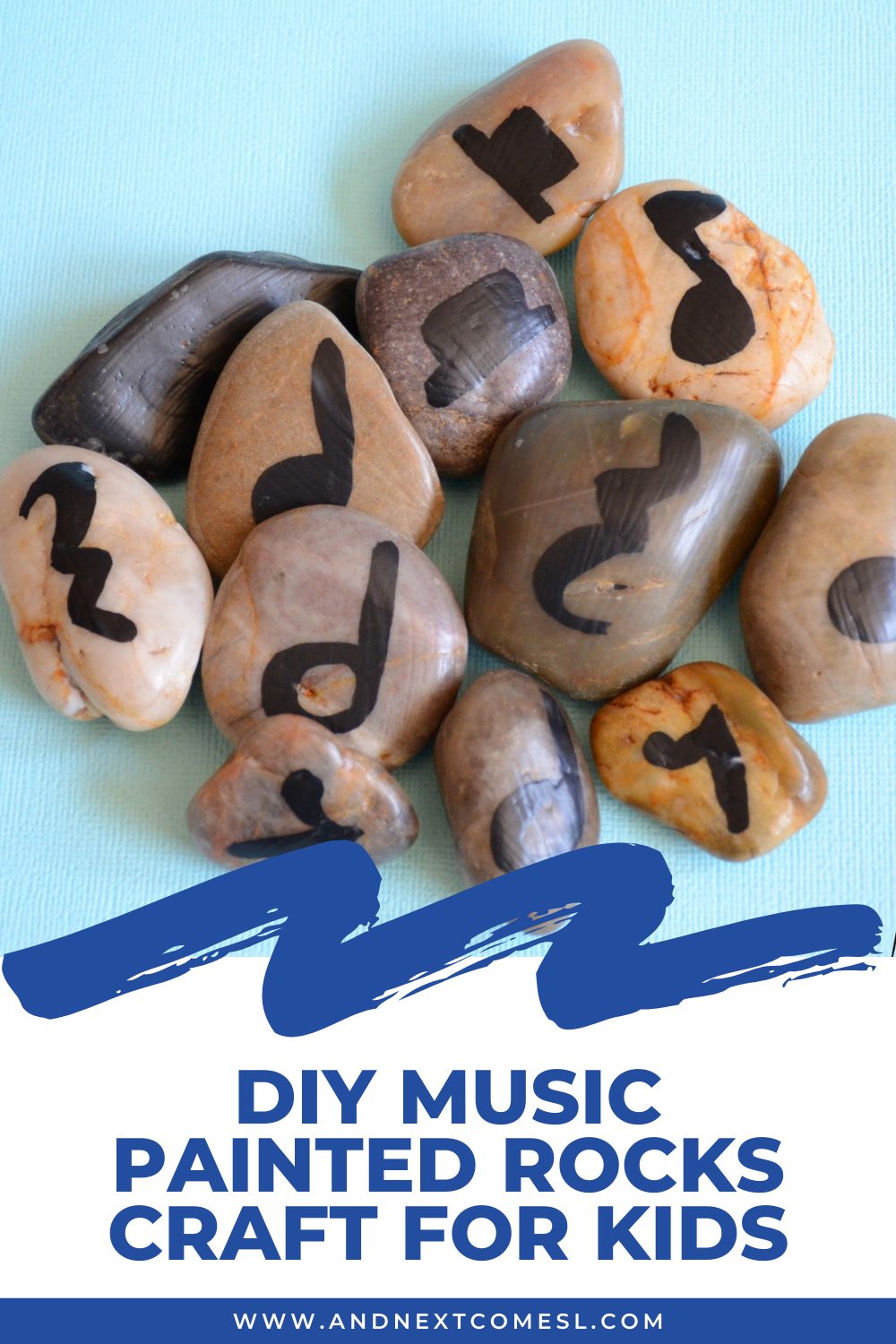How to make a set of DIY music painted rocks to teach kids about music theory.
Teaching music theory to my beginner piano students can sometimes be tricky, as some of the concepts can feel a bit abstract to some kids. So sometimes we have to skip the paper and pencil and do some hands-on work.
These DIY music painted rocks are going to be great for exploring music theory with my piano students.
However, I made these music rocks originally for my boys. Although only four and two, they both already have quite a substantial amount of musical knowledge. For instance, J loves to use the words Allegro and Largo when talking about fast and slow even if it's in reference to cutting meat at suppertime (e.g., "Mom, I'm cutting Allegro!").
So I figured that both of my boys would enjoy learning some more music theory with these music rocks. They really rock. Ha! Oh come on. You didn't seriously think I would pass up the chance to do a pun, did you?!
DIY Music Painted Rocks: What You'll Need
Making your own set of musical rocks is super easy. Here's what you'll need for this rock painting project:
- Medium sized rocks - All good rock painting ideas start with rocks, right? Obviously, they do.
- Acrylic paint - I used just black acrylic paint. However, if your rocks are darker in color than mine, you might want to use some white acrylic paint first to prime your painting surface.
- Mod Podge - To seal and protect your music rocks.
I hand painted some eighth notes, eighth rests, quarter notes, quarter rests, half notes, and half rests (or hats as my youngest K likes to call them!). I did two of each symbol. But you could make whole notes, sixteenth notes, clefs, accents, or whatever else you'd like. Once the paint was dry, I covered them with a coat of Mod Podge.
Fun Ways to Use these Music Rocks to Teach Music Theory
There are lots of ways to play with these music rocks. Some ideas include:
- Play a matching game. Match the same symbols together (e.g., quarter note and quarter note).
- Play a count matching game. Match the note and rest that have the same note value (e.g., half note and half rest).
- Compose a rhythm with the music rocks and clap it.
- Practice note naming on the grand staff using the note rocks (skip the rests for this part).
- Compose a tune on the grand staff and play it on the piano (see picture below). I guess you could call the tune "rock music."
My oldest son J really liked to line these painted rocks up. He was convinced some of them looked like letters. So here he is trying to spell some words out of the music rocks. Hyperlexia in action right here.
Can you think of any other fun music theory games or activities you could do with these DIY music painted rocks? I'm sure there are plenty of other awesome ways to use them!








